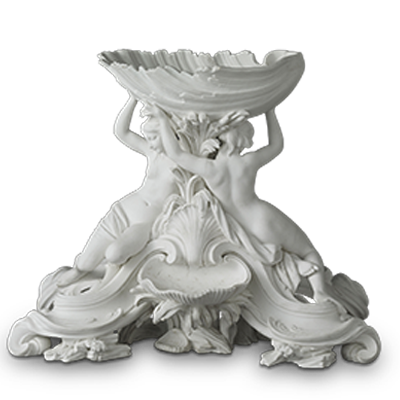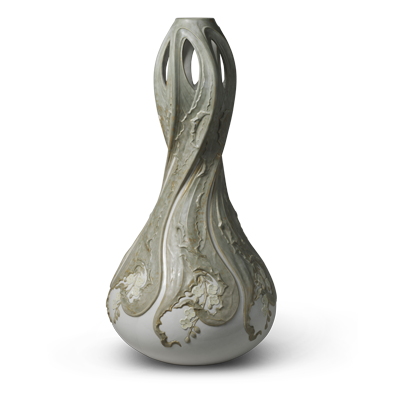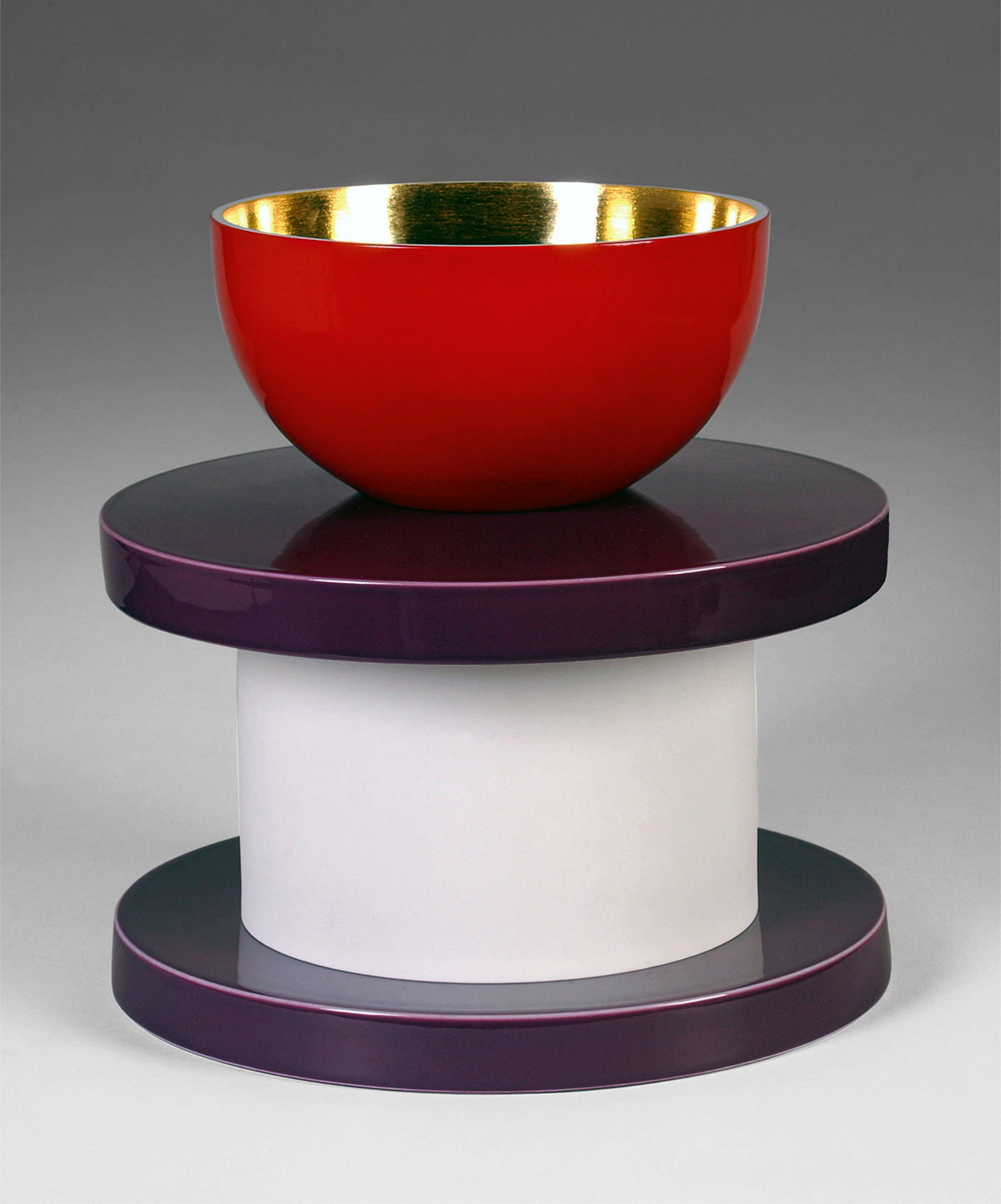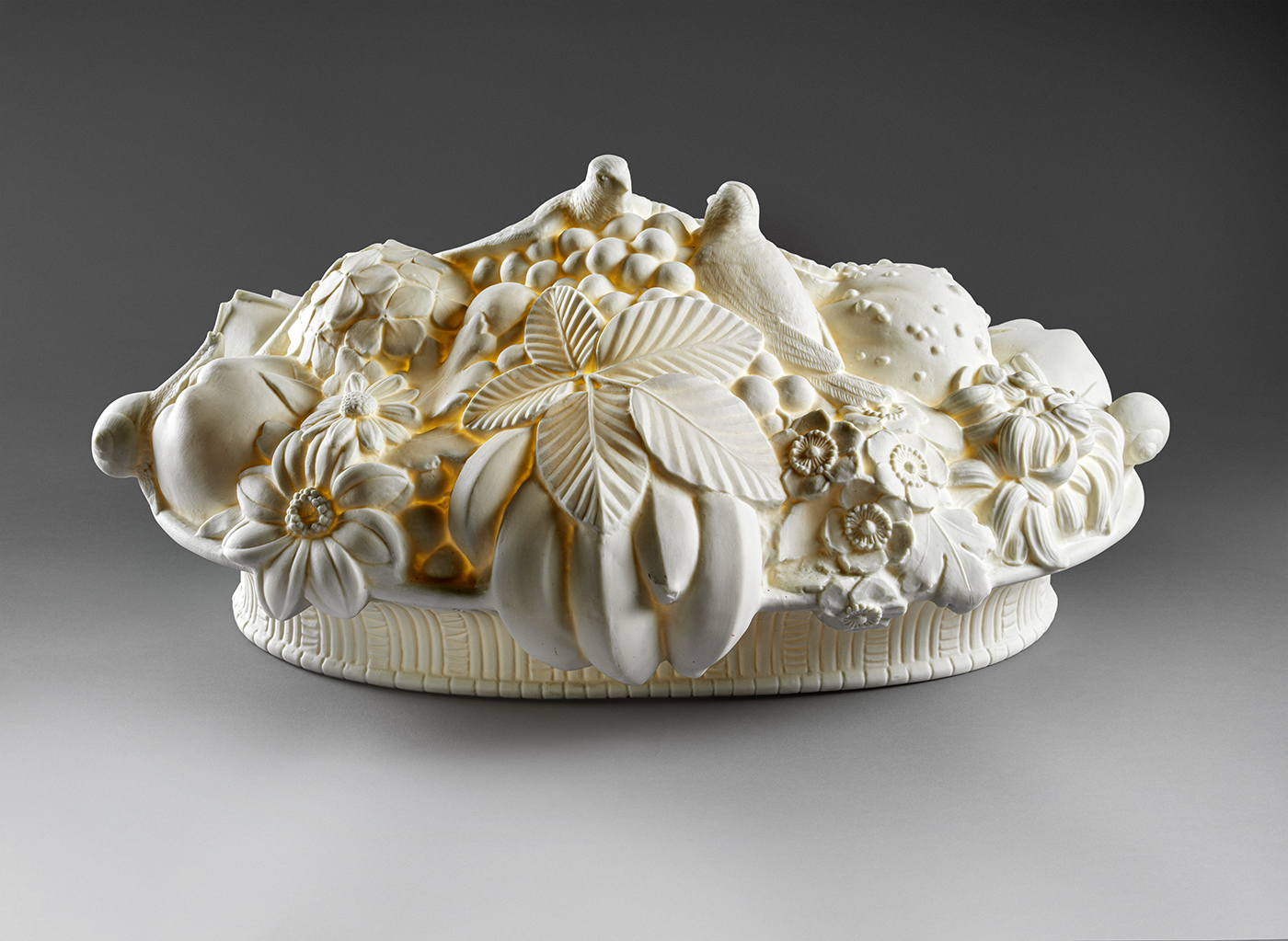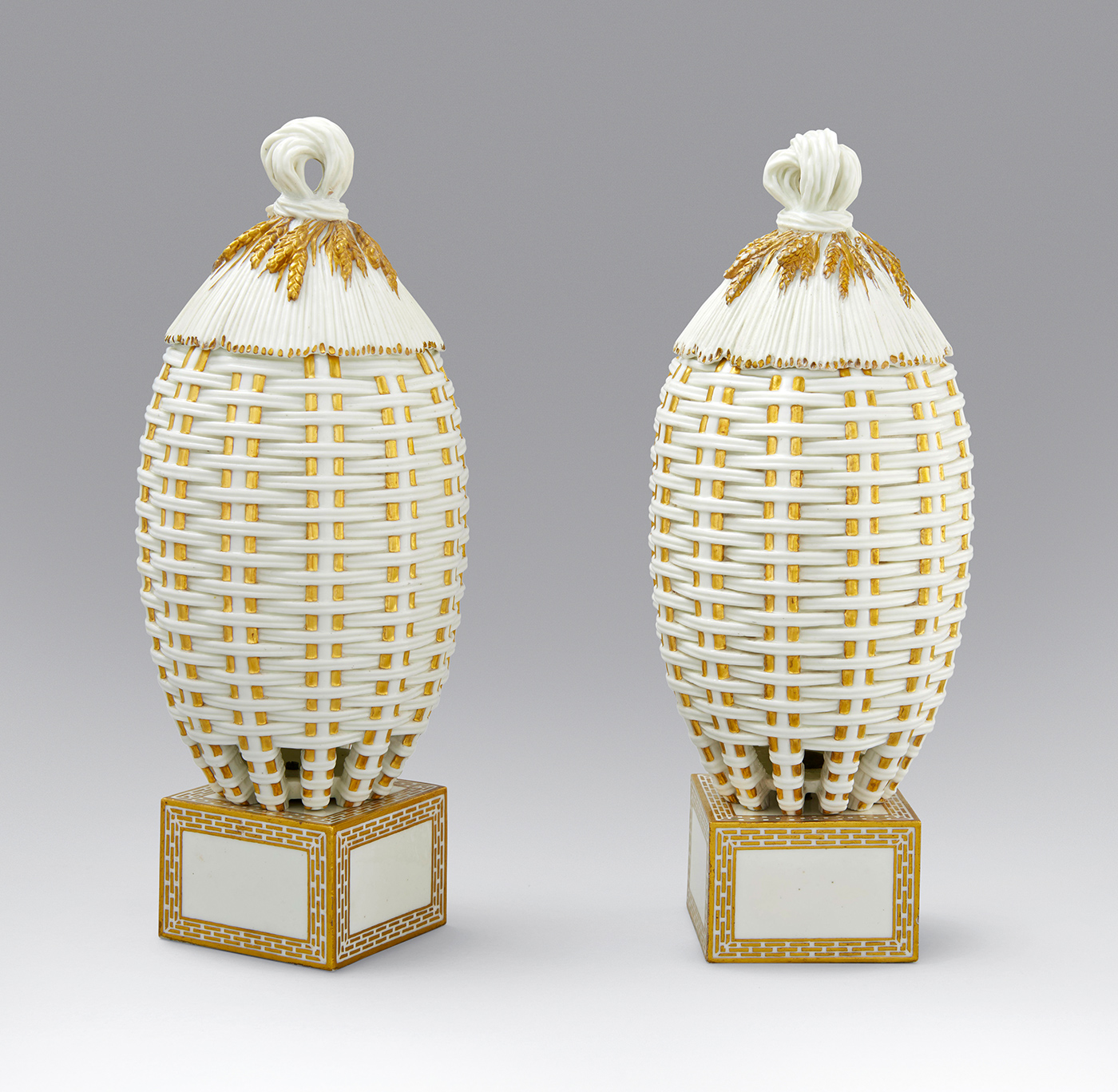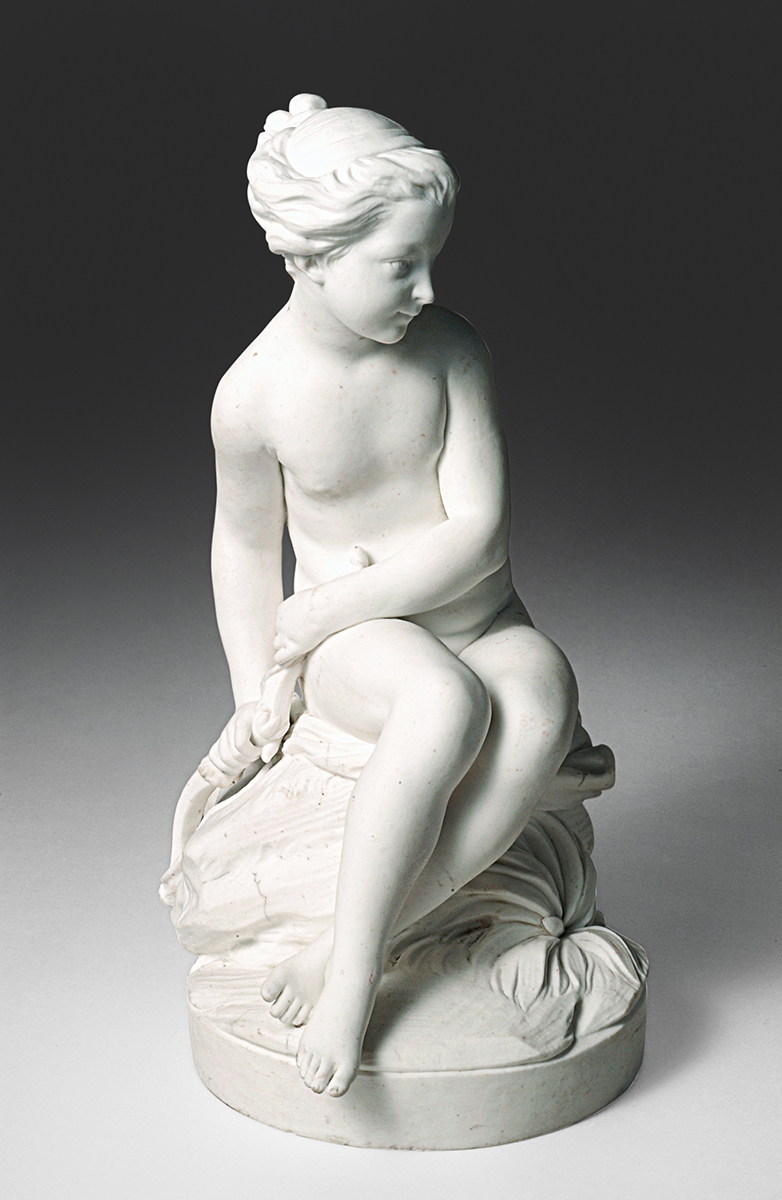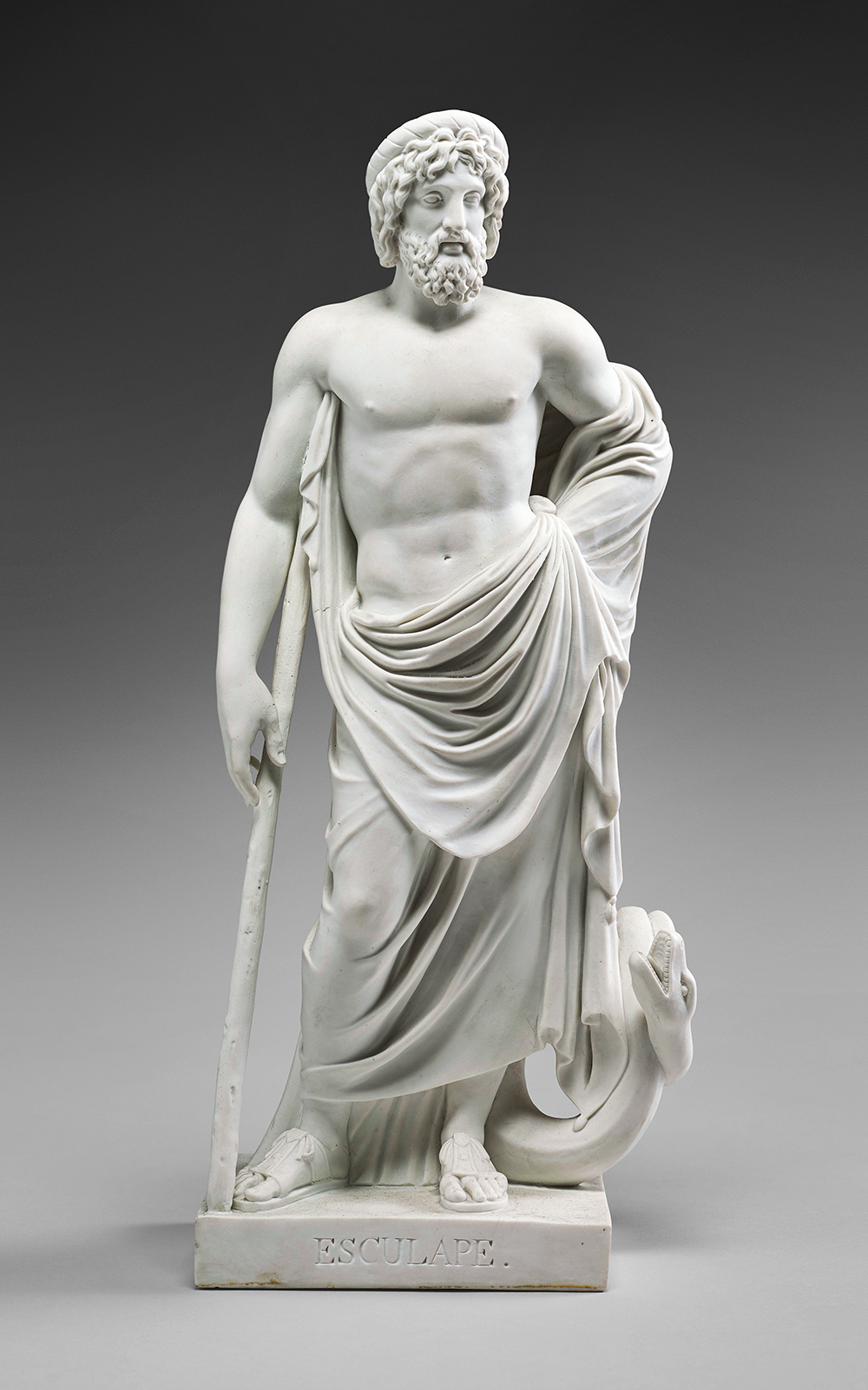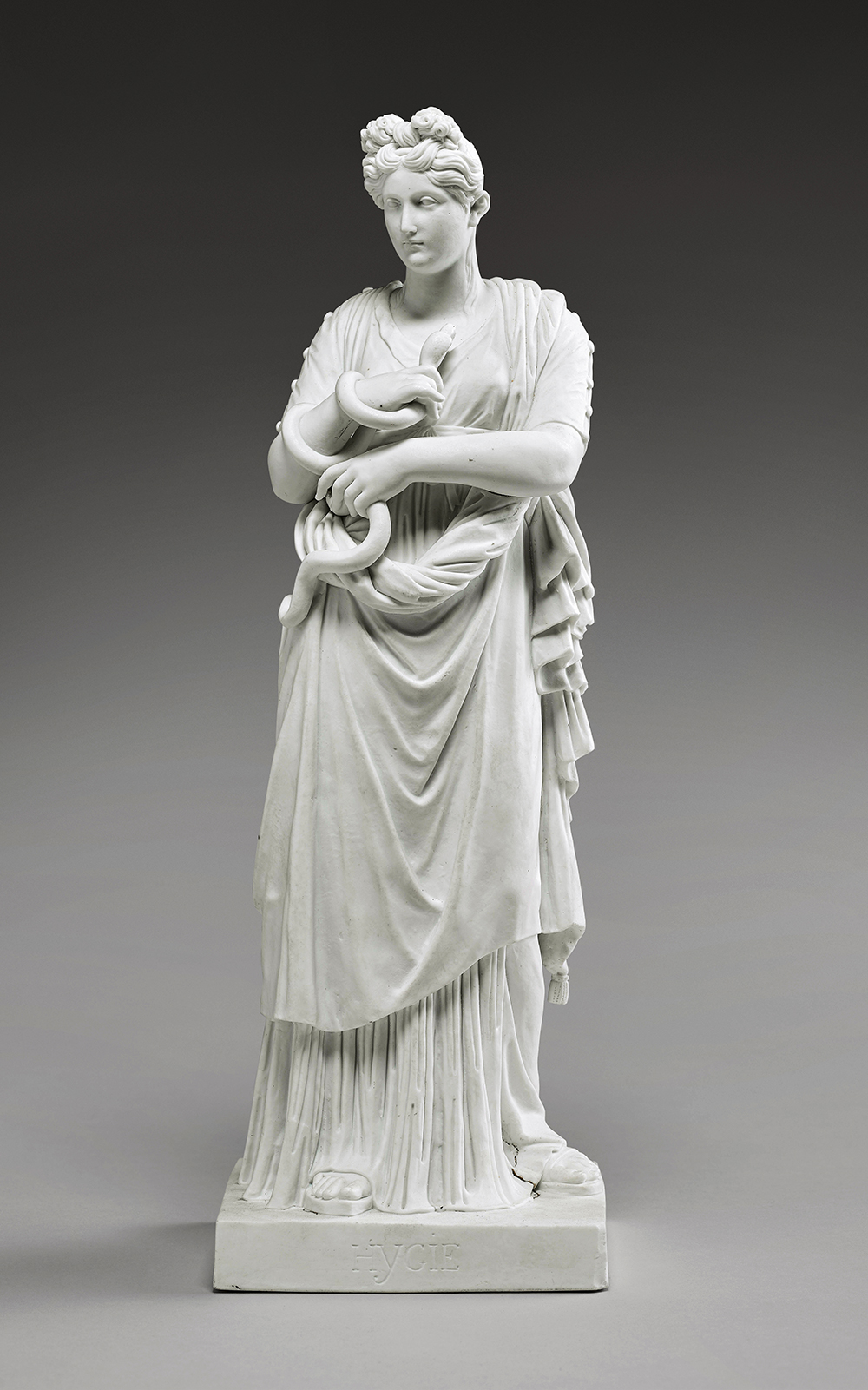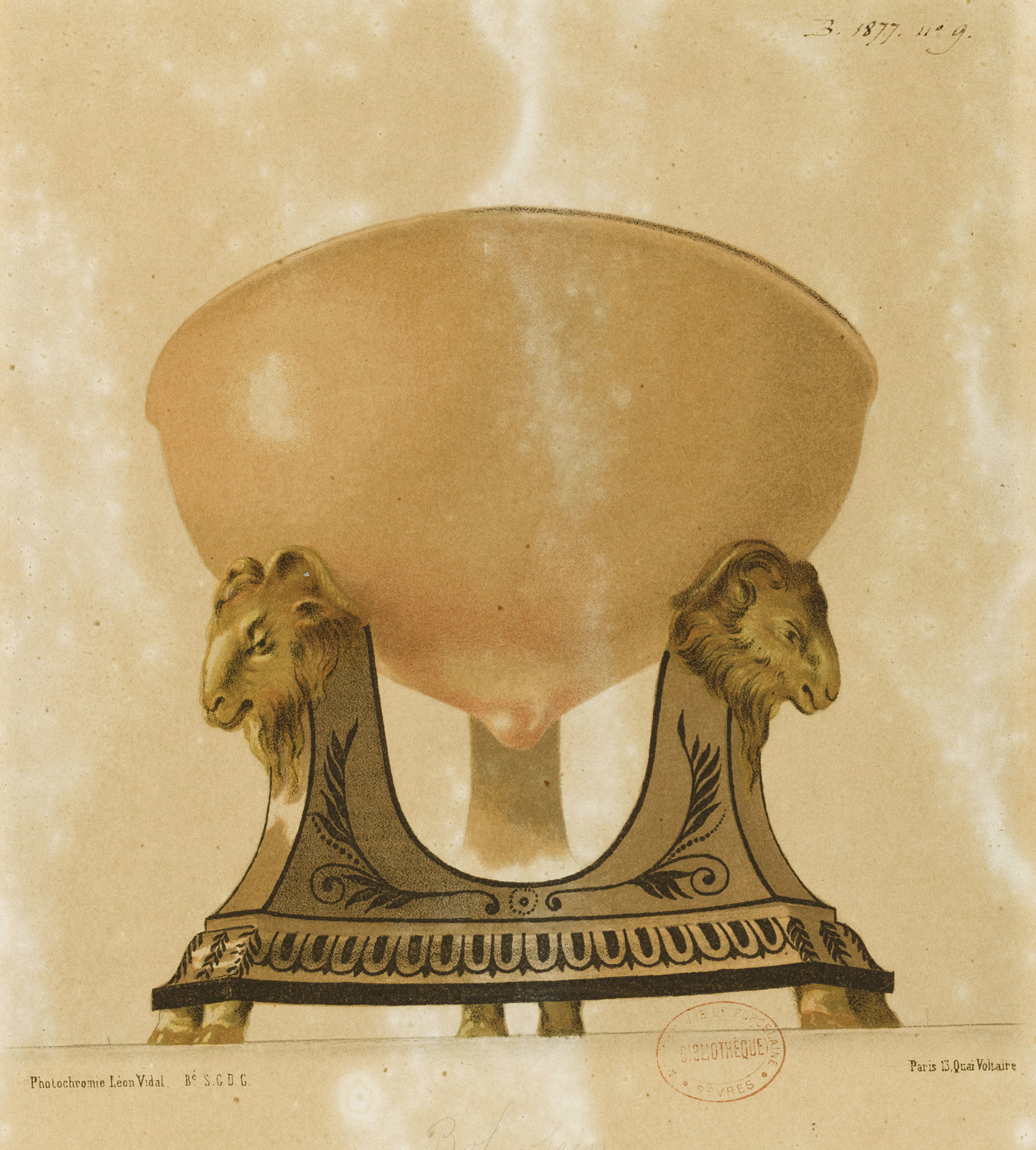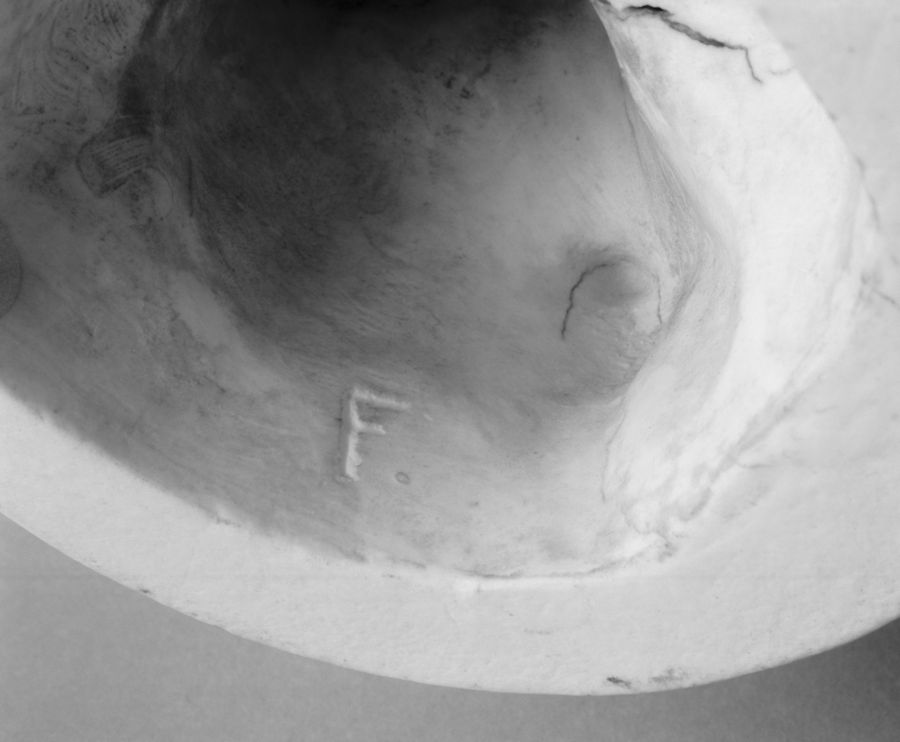Contemporary
In the first two decades of the twenty-first century, Sèvres nurtured collaborations with many leading contemporary artists: not only ceramists and sculptors, but also architects, designers, painters, photographers, and printmakers. Artists invited for residencies immerse themselves in the museum’s collections and the manufactory’s archives and learn directly from the 120 artisans still active at Sèvres. As a result, contemporary works often reflect the history and the heritage of Sèvres, drawing from the rich patrimony of forms and decorations developed since the eighteenth century.
The inclusion of internationally renowned artists has raised Sèvres’ profile and extended its client base outside France’s borders, while collaborations with emergent and well-established French artists continue the manufactory’s artisanal traditions. Sèvres has always been a place where experimentation within and dialogue between arts are encouraged, fully supporting the visions and passions of artists.
Contemporary
In the first two decades of the twenty-first century, Sèvres nurtured collaborations with many leading contemporary artists: not only ceramists and sculptors, but also architects, designers, painters, photographers, and printmakers. Artists invited for residencies immerse themselves in the museum’s collections and the manufactory’s archives and learn directly from the 120 artisans still active at Sèvres. As a result, contemporary works often reflect the history and the heritage of Sèvres, drawing from the rich patrimony of forms and decorations developed since the eighteenth century.
The inclusion of internationally renowned artists has raised Sèvres’ profile and extended its client base outside France’s borders, while collaborations with emergent and well-established French artists continue the manufactory’s artisanal traditions. Sèvres has always been a place where experimentation within and dialogue between arts are encouraged, fully supporting the visions and passions of artists.
In the first two decades of the twenty-first century, Sèvres nurtured collaborations with many leading contemporary artists: not only ceramists and sculptors, but also architects, designers, painters, photographers, and printmakers. Artists invited for residencies immerse themselves in the museum’s collections and the manufactory’s archives and learn directly from the 120 artisans still active at Sèvres. As a result, contemporary works often reflect the history and the heritage of Sèvres, drawing from the rich patrimony of forms and decorations developed since the eighteenth century.
The inclusion of internationally renowned artists has raised Sèvres’ profile and extended its client base outside France’s borders, while collaborations with emergent and well-established French artists continue the manufactory’s artisanal traditions. Sèvres has always been a place where experimentation within and dialogue between arts are encouraged, fully supporting the visions and passions of artists.
Serge Gauthier
In 1964 Serge Gauthier was appointed as the director of the Sèvres Manufactory, remaining in the role until 1976. An empathetic and unconventional administrator, he initiated a complete renewal of the manufactory’s spirit of production. Gauthier persuaded a new generation of artists to work at Sèvres, reducing its previous reliance on the reproduction of eighteenth- and nineteenth-century models. His immediate successors, Jean Mathieu (worked at Sèvres, 1976–82), Robert Bizot (worked at Sèvres, 1982–92), and Georges Touzenis (worked at Sèvres, 1992–2002), all followed him in nurturing the manufactory’s relationship with young, independent contemporary artists, even when the work they produced did not match the tastes of Sèvres’ commercial audience.
During this experimental period, numerous materials were brought into play, including two new pastes developed at Sèvres in the laboratory of Antoine d’Albis (worked at Sèvres, 1964–2003). The first was a very white paste called pâte Antoine d’Albis (PAA) which was released in 1965 and was often combined with a semimatte glaze, especially in the 1970s. Both innovations are evident in the stark white architectural vase form of Christian Renonciat’s Medici Rolled Foam Vase. In 1977 a new soft paste containing phosphates was developed that artists embraced for its whiteness and the wide range of bright glazes that could be applied to it. Both Viola Frey’s Western Civilization and Richard Peduzzi’s Reform Vase display this paste’s characteristic use, combining bold shapes and kaleidoscopic color.
In 1964 Serge Gauthier was appointed as the director of the Sèvres Manufactory, remaining in the role until 1976. An empathetic and unconventional administrator, he initiated a complete renewal of the manufactory’s spirit of production. Gauthier persuaded a new generation of artists to work at Sèvres, reducing its previous reliance on the reproduction of eighteenth- and nineteenth-century models. His immediate successors, Jean Mathieu (worked at Sèvres, 1976–82), Robert Bizot (worked at Sèvres, 1982–92), and Georges Touzenis (worked at Sèvres, 1992–2002), all followed him in nurturing the manufactory’s relationship with young, independent contemporary artists, even when the work they produced did not match the tastes of Sèvres’ commercial audience.
During this experimental period, numerous materials were brought into play, including two new pastes developed at Sèvres in the laboratory of Antoine d’Albis (worked at Sèvres, 1964–2003). The first was a very white paste called pâte Antoine d’Albis (PAA) which was released in 1965 and was often combined with a semimatte glaze, especially in the 1970s. Both innovations are evident in the stark white architectural vase form of Christian Renonciat’s Medici Rolled Foam Vase. In 1977 a new soft paste containing phosphates was developed that artists embraced for its whiteness and the wide range of bright glazes that could be applied to it. Both Viola Frey’s Western Civilization and Richard Peduzzi’s Reform Vase display this paste’s characteristic use, combining bold shapes and kaleidoscopic color.
Glazed and decorated soft-paste porcelain
Manufacture et Musée nationaux, Sèvres, MNC 27045
Photo © RMN-Grand Palais (Sèvres – Manufacture et musée nationaux) / Martine Beck-Coppola
© 2024 Artists’ Legacy Foundation / Artists Rights Society (ARS), NY
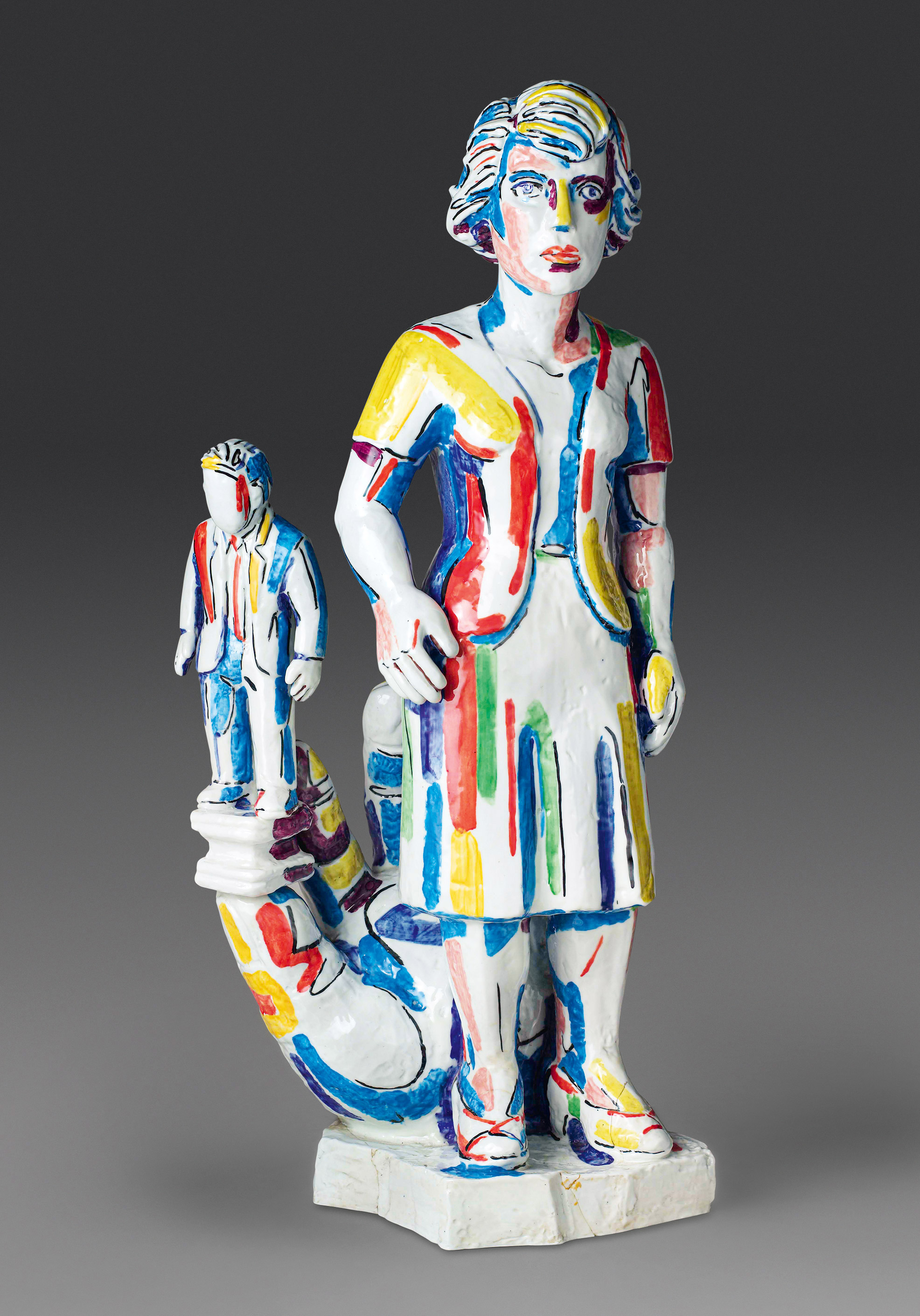

Glazed and decorated soft-paste porcelain
Manufacture et Musée nationaux, Sèvres, MNC 27045
Photo © RMN-Grand Palais (Sèvres – Manufacture et musée nationaux) / Martine Beck-Coppola
© 2024 Artists’ Legacy Foundation / Artists Rights Society (ARS), NY
Jean (Hans) Arp
Jean (Hans) Arp (1866–1966), a German French sculptor, painter, poet, and founding member of the Dada movement, worked at the Sèvres Manufactory between 1963 and 1966 at the invitation of director Serge Gauthier. While there, Arp designed six vases exploring different materials, including stoneware, to create novel sculptural forms. Drawing inspiration from the natural world and the Sèvres repertoire, including an Art Nouveau vase created in 1900, Arp’s work reinvigorated the manufactory’s production of shapes, preparing the way for the experimental forms of other sculptors including Ettore Sottsass and Richard Peduzzi. In addition to vase prototypes and abstract low-relief forms, the manufactory has conserved a few of Arp’s preparatory drawings in its archives. The one featured here illustrates his vases’ simple silhouettes with cut-out colored and painted paper.
Jean (Hans) Arp (1866–1966), a German French sculptor, painter, poet, and founding member of the Dada movement, worked at the Sèvres Manufactory between 1963 and 1966 at the invitation of director Serge Gauthier. While there, Arp designed six vases exploring different materials, including stoneware, to create novel sculptural forms. Drawing inspiration from the natural world and the Sèvres repertoire, including an Art Nouveau vase created in 1900, Arp’s work reinvigorated the manufactory’s production of shapes, preparing the way for the experimental forms of other sculptors including Ettore Sottsass and Richard Peduzzi. In addition to vase prototypes and abstract low-relief forms, the manufactory has conserved a few of Arp’s preparatory drawings in its archives. The one featured here illustrates his vases’ simple silhouettes with cut-out colored and painted paper.
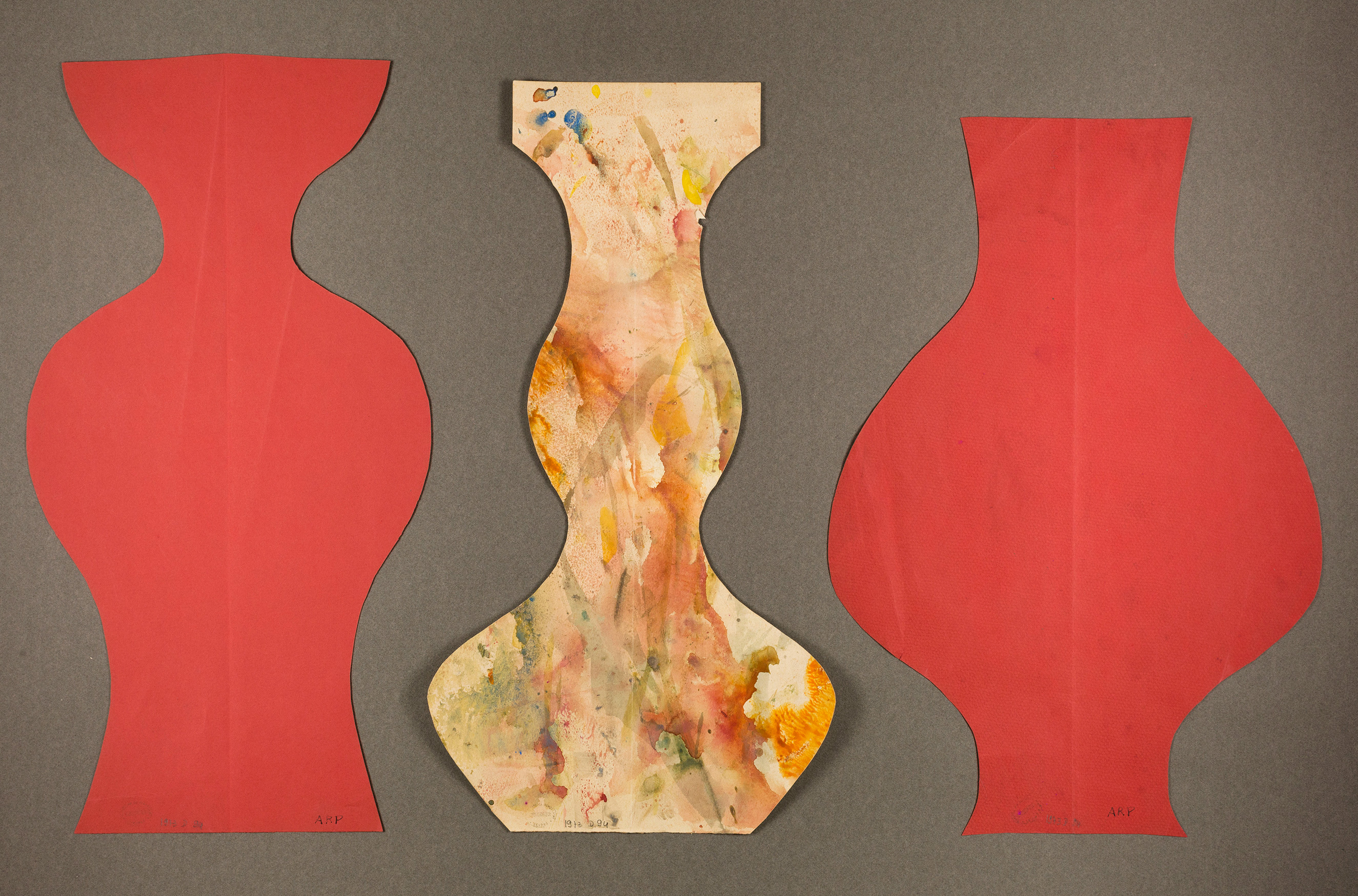
Cut and colored papers glued on paper
Manufacture et Musée nationaux, Sèvres, MNS 1973.D.94
Photo © Sèvres – Manufacture et musée nationaux, Dist. RMN-Grand Palais / Manzara
© 2024 Artists Rights Society (ARS), New York / VG Bild-Kunst, Bonn
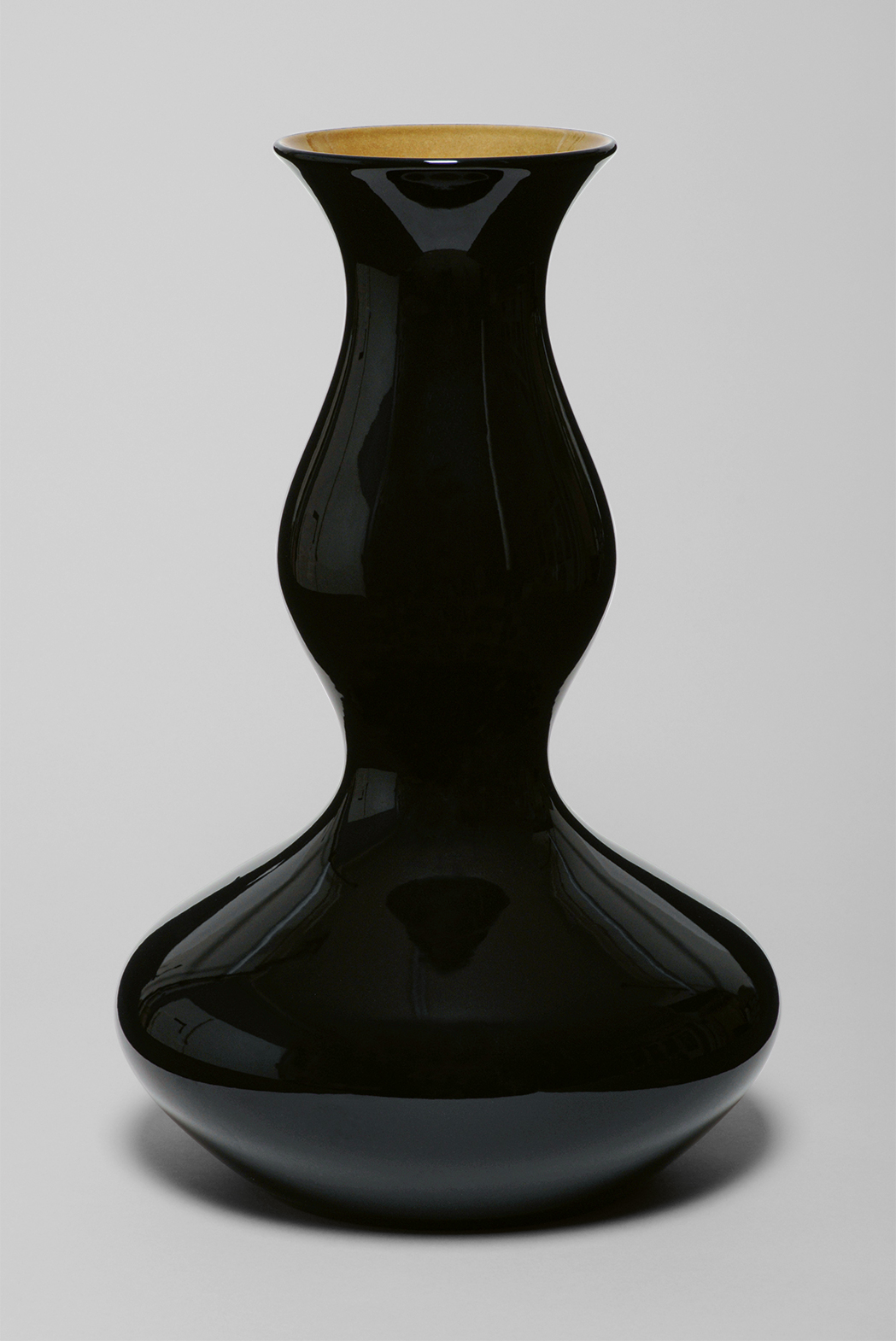
Glazed and colored stoneware
Manufacture et Musée nationaux, Sèvres, MNS 2009.D.273
Photographer: Gérard Jonca
Glazed and colored stoneware
Manufacture et Musée nationaux, Sèvres, MNS 2009.D.273
Photographer: Gérard Jonca

Glazed and colored stoneware
Manufacture et Musée nationaux, Sèvres, MNS 2020.D.258
Photo © Sèvres – Manufacture et musée nationaux, Dist. RMN-Grand Palais / Gérard Jonca
© 2024 Artists Rights Society (ARS), New York / VG Bild-Kunst, Bonn.
Glazed and colored stoneware
Manufacture et Musée nationaux, Sèvres, MNS 2020.D.258
Photo © Sèvres – Manufacture et musée nationaux, Dist. RMN-Grand Palais / Gérard Jonca
© 2024 Artists Rights Society (ARS), New York / VG Bild-Kunst, Bonn.

Cut and colored papers glued on paper
Manufacture et Musée nationaux, Sèvres, MNS 1973.D.94
Photo © Sèvres – Manufacture et musée nationaux, Dist. RMN-Grand Palais / Manzara
© 2024 Artists Rights Society (ARS), New York / VG Bild-Kunst, Bonn
Kristin McKirdy
During her residence at the Sèvres Manufactory between 2008 and 2012, Kristin McKirdy (b. 1958) was inspired by eighteenth-century materials, including unglazed biscuit and the period’s palette of pastel colors. She worked with the manufactory’s chemists to develop several new glazes in a “McKirdy palette” of colors, including a burnished turquoise and two emerald tints meant to suggest the glimmer of gemstones.
McKirdy’s Nature Morte resembles a grand dessert plate piled high with pure white confections and “delicious” colorful jewels. She describes it as “a symbolic homage to the prestige of the productions of the past, to the splendor and symbol of power associated with them.” The highly structured form of this sculpture posed a technical challenge, as its many sharp angles and crevices are difficult to replicate in porcelain.
During her residence at the Sèvres Manufactory between 2008 and 2012, Kristin McKirdy (b. 1958) was inspired by eighteenth-century materials, including unglazed biscuit and the period’s palette of pastel colors. She worked with the manufactory’s chemists to develop several new glazes in a “McKirdy palette” of colors, including a burnished turquoise and two emerald tints meant to suggest the glimmer of gemstones.
McKirdy’s Nature Morte resembles a grand dessert plate piled high with pure white confections and “delicious” colorful jewels. She describes it as “a symbolic homage to the prestige of the productions of the past, to the splendor and symbol of power associated with them.” The highly structured form of this sculpture posed a technical challenge, as its many sharp angles and crevices are difficult to replicate in porcelain.
Glazed and decorated porcelain
Private collection
© Sèvres – Manufacture et musée nationaux / Gérard Jonca
© Kristin McKirdy
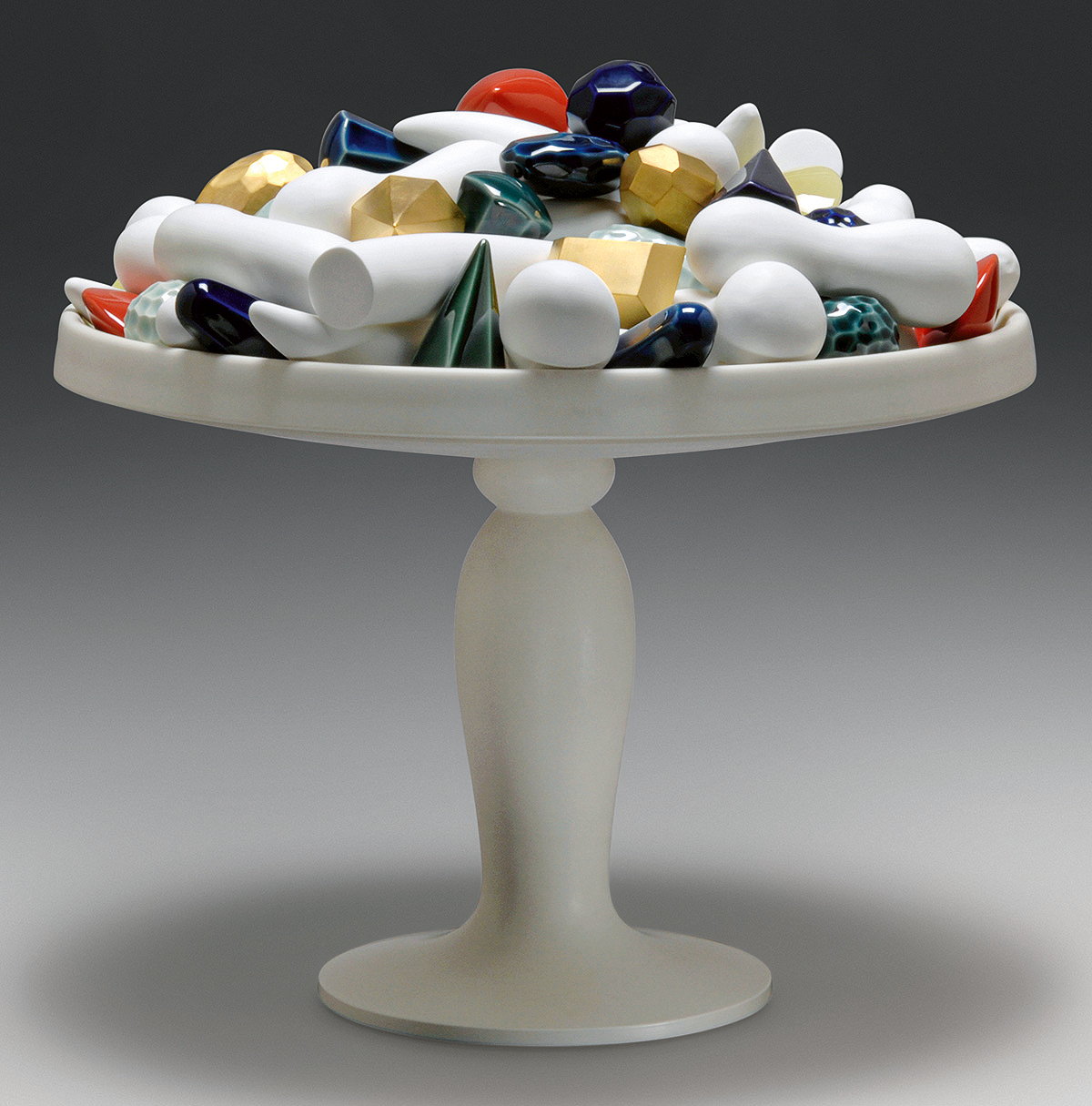
Glazed and decorated porcelain
Private collection
© Sèvres – Manufacture et musée nationaux / Gérard Jonca
© Kristin McKirdy
Arman (Armand Fernandez)
The French-born American artist Arman (1928– 2005) is known for his éclatement sculptures, made by “exploding” ordinary objects and then artfully recomposing them. In 1987 he created Interactive Triptyque Vase, which adapted the form of one of the vases created at Sèvres between 1932 and 1948 by Émile Decoeur (1876–1953). Arman took Decoeur’s form, sliced it into three sections, then joined the pieces with metal hinges so that the object can be opened and closed like a screen. It is finished with traditional bleu de Sèvres and gold. This sculpture is technically challenging to manufacture because the delicate metal parts are embedded at the very edges of the porcelain sections.
The French-born American artist Arman (1928– 2005) is known for his éclatement sculptures, made by “exploding” ordinary objects and then artfully recomposing them. In 1987 he created Interactive Triptyque Vase, which adapted the form of one of the vases created at Sèvres between 1932 and 1948 by Émile Decoeur (1876–1953). Arman took Decoeur’s form, sliced it into three sections, then joined the pieces with metal hinges so that the object can be opened and closed like a screen. It is finished with traditional bleu de Sèvres and gold. This sculpture is technically challenging to manufacture because the delicate metal parts are embedded at the very edges of the porcelain sections.
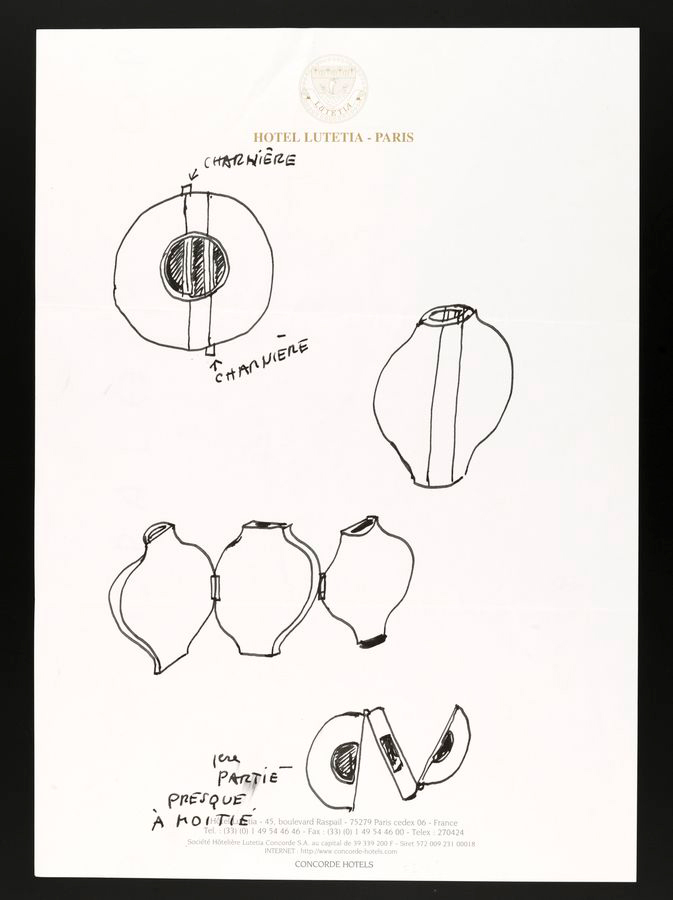
Felt-tip marker on paper
Manufacture et Musée nationaux, Sèvres, MNS 2015.D.240
Photo © Sèvres – Manufacture et musée nationaux, Dist. RMN-Grand Palais / Manzara
© 2024 Artists Rights Society (ARS), New York / ADAGP, Paris
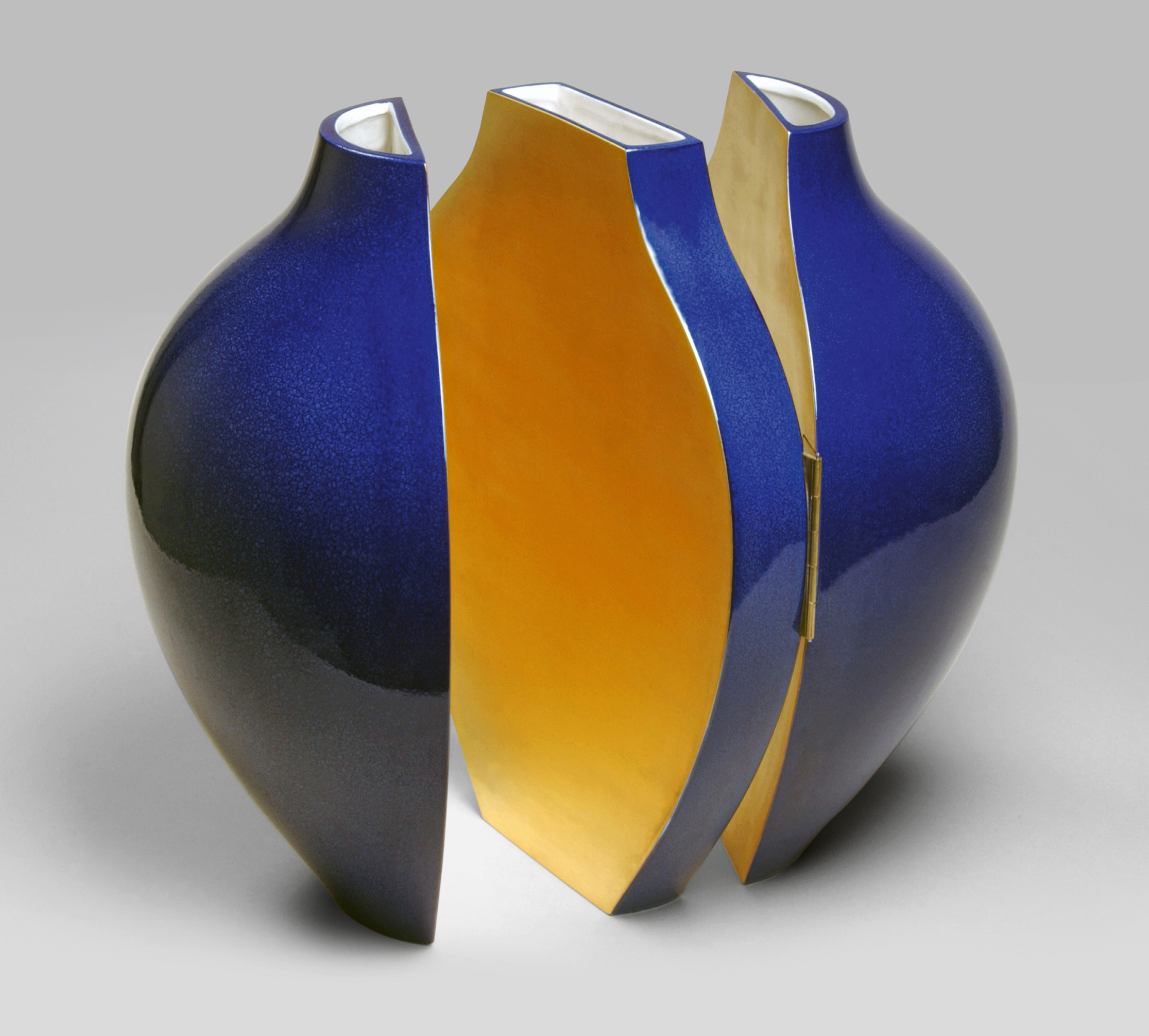
Glazed and decorated PAA porcelain and gilt bronze
Manufacture et Musée nationaux, Sèvres, MNS 2008.2.2
Photo © Sèvres – Manufacture et musée nationaux, Dist. RMN-Grand Palais / Gérard Jonca
© 2024 Artists Rights Society (ARS), New York / ADAGP, Paris
Glazed and decorated PAA porcelain and gilt bronze
Manufacture et Musée nationaux, Sèvres, MNS 2008.2.2
Photo © Sèvres – Manufacture et musée nationaux, Dist. RMN-Grand Palais / Gérard Jonca
© 2024 Artists Rights Society (ARS), New York / ADAGP, Paris

Felt-tip marker on paper
Manufacture et Musée nationaux, Sèvres, MNS 2015.D.240
Photo © Sèvres – Manufacture et musée nationaux, Dist. RMN-Grand Palais / Manzara
© 2024 Artists Rights Society (ARS), New York / ADAGP, Paris
Pucci de Rossi
Sculptor and designer Pucci de Rossi (1947–2013) collaborated with the Sèvres Manufactory in 2012, creating objects that spark imagination and humor. To create his Nuts and Bolts Vase, the artist started with a classical form from the repertoire, a Vase Medici designed by Alexandre Théodore Brongniart in 1806, who was in turn inspired by an antique krater owned by the Medici family. This sketch shows de Rossi’s careful preparation for his vase before its final form was executed in porcelain. His pairing of decorative porcelain with utilitarian nuts and bolts may seem surprising, but both are ancient tools that have survived despite technology’s advances.
Sculptor and designer Pucci de Rossi (1947–2013) collaborated with the Sèvres Manufactory in 2012, creating objects that spark imagination and humor. To create his Nuts and Bolts Vase, the artist started with a classical form from the repertoire, a Vase Medici designed by Alexandre Théodore Brongniart in 1806, who was in turn inspired by an antique krater owned by the Medici family. This sketch shows de Rossi’s careful preparation for his vase before its final form was executed in porcelain. His pairing of decorative porcelain with utilitarian nuts and bolts may seem surprising, but both are ancient tools that have survived despite technology’s advances.
Graphite and red chalk on paper
Photo © Sèvres – Manufacture et musée nationaux, Dist. RMN-Grand Palais / Manzara
© Pucci de Rossi
Porcelain biscuit
Manufacture et Musée nationaux, Sèvres, MNS 2019.D.315
Photographer: Gérard Jonca
© Pucci de Rossi




Graphite and red chalk on paper
Photo © Sèvres – Manufacture et musée nationaux, Dist. RMN-Grand Palais / Manzara
© Pucci de Rossi
Porcelain biscuit
Manufacture et Musée nationaux, Sèvres, MNS 2019.D.315
Photographer: Gérard Jonca
© Pucci de Rossi
Johan Creten
Sculptor and ceramist Johan Creten (b. 1963) created works in porcelain and stoneware for Sèvres between 2004 and 2007, reviving several materials and techniques, some of which had been dormant since the 1960s. The title of this piece, Odore di Femmina de Sèvres (Scent of a Woman of Sèvres), is taken from a line in Mozart’s opera Don Giovanni in which the famous seducer recognizes the presence of a woman by her scent. Here, Creten has evoked the woman’s fragrance using pastillage, an eighteenth-century technique developed at the Vincennes Manufactory to sculpt flowers. For Scent of a Woman of Sèvres, the raw porcelain pastille flowers were applied directly by molder-repairers onto a cast female torso, directed at every step by Creten.
Sculptor and ceramist Johan Creten (b. 1963) created works in porcelain and stoneware for Sèvres between 2004 and 2007, reviving several materials and techniques, some of which had been dormant since the 1960s. The title of this piece, Odore di Femmina de Sèvres (Scent of a Woman of Sèvres), is taken from a line in Mozart’s opera Don Giovanni in which the famous seducer recognizes the presence of a woman by her scent. Here, Creten has evoked the woman’s fragrance using pastillage, an eighteenth-century technique developed at the Vincennes Manufactory to sculpt flowers. For Scent of a Woman of Sèvres, the raw porcelain pastille flowers were applied directly by molder-repairers onto a cast female torso, directed at every step by Creten.
Glazed and decorated grog stoneware
Manufacture et Musée nationaux, Sèvres, MNS 2008.O.140
Photographer: Gérard Jonca
© 2024 Artists Rights Society (ARS), New York / ADAGP, Paris


Glazed and decorated grog stoneware
Manufacture et Musée nationaux, Sèvres, MNS 2008.O.140
Photographer: Gérard Jonca
© 2024 Artists Rights Society (ARS), New York / ADAGP, Paris
Jump to:


